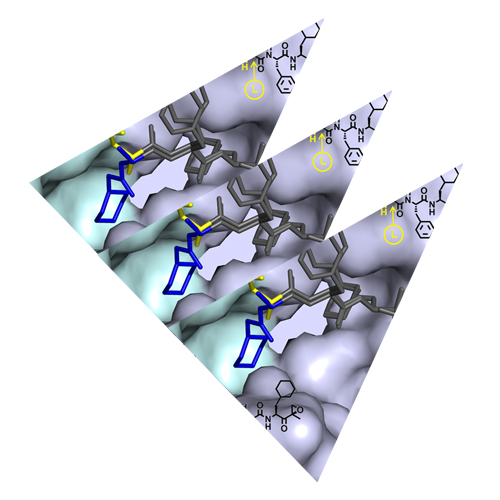Structure-Based Design of β1i or β5i Specific Inhibitors of Human Immunoproteasomes
09-Jul-2014
J. Med. Chem., 2014, DOI: 10.1021/jm500716s, 57 (14), pp 6197–6209, published on 09.07.2014
J. Med. Chem., online article
J. Med. Chem., online article
Mammalian genomes encode seven catalytic proteasome subunits, namely, β1c, β2c, β5c (assembled into constitutive 20S proteasome core particles), β1i, β2i, β5i (incorporated into immunoproteasomes), and the thymoproteasome-specific subunit β5t. Extensive research in the past decades has yielded numerous potent proteasome inhibitors including compounds currently used in the clinic to treat multiple myeloma and mantle cell lymphoma. Proteasome inhibitors that selectively target combinations of β1c/β1i, β2c/β2i, or β5c/β5i are available, yet ligands truly selective for a single proteasome activity are scarce. In this work we report the development of cell-permeable β1i and β5i selective inhibitors that outperform existing leads in terms of selectivity and/or potency. These compounds are the result of a rational design strategy using known inhibitors as starting points and introducing structural features according to the X-ray structures of the murine constitutive and immunoproteasome 20S core particles.











